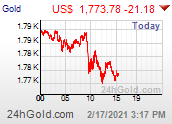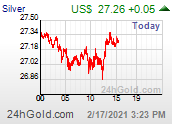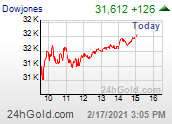GOOSE POOP IN THE LOOP? Bright blue plastic tubing doesn't belong in City Park
Thanks to Linda Drake for this excellent report. (Pictures from the Re-imagine Play presentation added)
 | |
|
11/21/13 Denver City Park Loop Meeting with (Park Hill) Philosophers: Larry Drake,Frank Sullivan, Wick Downing, JD MacFarlane, Bill Juraschek, John Mullens, Al Haggerty, Bill Sullivan, Dick Young; not philosophers: Linda Drake, Shirley Schley,Tom Morris, Councilman Albus Brooks, and Deputy Manager of Parks & Planning Scott Gilmore.
We were very fortunate to have both Scott Gilmore and Albus Brooks meet with us on this past snowy Thursday morning at Bogey’s. The responsiveness to our initial contact with Albus last week, after first learning about The City Park Loop Project, was terrific.
At our meeting Scott Gilmore presented most of the information and the Parks and Recs point-of-view, with Albus Brooks arriving late (snow traffic), but also offering thoughts and information. Both are supportive of the City Park Loop development, replacing and expanding upon the broken-down Justin Redd Playground.
While the Park Hill Philosphers group & friends continues to have concerns, one of our greatest frustrations was the lack of communication and information about the project to this point, which has been restricted - though not purposely - to small-audience settings, like neighborhood organizations, and important meeting times during the summer, occasional articles in neighborhood papers. Both Albus and Scott repeated that they have reached out numerous times - they have done their job in communication, with the inevitable implication that we have not done ours in receiving the information.
Scott introduced himself and talked a little about his background, which included working for the Department of Wildlife teaching youth how to fish, serving on the Parks and Rec Board for 8 years, living at 26th and Ivy for a time, and earning a degree in Biology, born of his love for the parks and outdoors.
He told the story of the City Loop project development: in 2010 (1/2011 on Re-Imagine Play Public Outreach Schedule) the Department received a grant from the Colorado Health Foundation [ The Colorado Health Foundation Grant was $75,000 from what group researchers could find on the internet http://www.coloradohealth.org/Map/grants_search.aspx?id=274&Cod=3807 ] to develop a replacement for the Justin Redd Playground, which is deteriorating and requires inordinate amounts of maintenance from the City.
With this grant, P & R put out a request for proposal (RFP) and 12 firms came back with concepts. “The public” narrowed those proposals from 12 to 8 to 3 over a period of time. Then “the public” determined that the Loop was the preferred design. P & R hired the architect “almost a year ago” and held meetings throughout the winter of 2013 to obtain feedback on design details.
Oct 2011 - article in Park Hill News (likely about the Re-Imagine Play and Justin Redd playground;
January 2012 - Reimagine Play site went online. It is well-worth googling Reimagine Play and reading about Denver Parks & Rec activities, studies, and policies concerning City Parks. Here is a link to Circulation and Use Plan for Denver’s City Park: http://www.denvergov.org/Portals/747/documents/planning/master_plans/CITY%20PARK_Final%20Doc.pdf
April 2012: Articles in Greater Park Hill News and Life on Capitol Hill
http://greaterparkhill.org/2013/04/01/new-playground-concept-at-city-park-throwing-some-neighbors-for-a-loop/ In this article, Dave Felice referenced some concerns regarding the park project, but the extent of the project was not mentioned - and perhaps the concept was not as extensive at that time.
Life on Capitol Hill articles not available online until December 2012.
Between May and June, public displays of eight architectural concepts were held at Denver Public Library, City Park Alliance, Dist 8 County Fair, Webb Building and the project ideas were presented at the Denver Parks & Rec Board.
June 2012 - 250 online comments, 30 email/phone/ 50 written comments.
June 22nd 2012 - Press release announcing three finalists.
July 2012: Displays at Colorado History Museum and presentation on Channel 8.
March - August 2013: focus groups, stakeholder meetings (stakeholders I believe are PRAB, Denver Museum of Nature and Science, the Zoo - am unsure about this…)
P & R presented at the Greater Park Hill Community Meeting on September 5th and at the South City Park Neighborhood Meeting on September 17, and the Final Concept - the City Park Loop, was presented at Movie in the Park on September 21st.
In evaluating the schedule, it is easy to see how, without media coverage, none of our group knew about it. The final concept, which is extensive in coverage (13 acres with a rubbery loop connecting three acres of actual development was not announced until September 21st at a Movie in the Park.
Scott emphasized that a) Mayor Hancock had nothing to do with this project and b) that this selection of City Park Loop is 60% conceptual at this point and that P & R remains open to public feedback.
Concerns Regarding City Park Loop
Tom Morris is a founder of Stop City Loop, which has a website with lots of information questioning the value of the City Loop project as a “replacement” for the Justin Redd Playground, and seems to advocate for upgrading the latter as an alternative. The site also presents concerns about the complete authority of the Manager of Parks and Rec to annex what we would consider as Park land for the use of the zoo - without any public comment whatsoever. http://stopcityloop.org He fears that a Manager may do the same thing with the new development area.
$5 million dollar pricetag
The City has limited funds for this and is seeking donations for most of the project; donations at certain levels could equate to naming, but Scott says there won’t be signs and advertising. He said that the $5m covers maintenance costs. To the doubters, that seems unlikely because something like this surely requires much more maintenance than a dilapidated playground.
What gives with the tubing?
From the expanded report: The Primary Loop is eight feet wide with rubberized travel lanes that snake and slip their way through the location of existing trees and other site elements to form a continuous circuit for activities like running, walking, skiing. To the outside of this are secondary loop spurs that peel away from and slip back towards the Primary Loop.
Thought Scott says that most of the interior of the loop will remain undeveloped, 8 feet of rubberized track and raised blue fencing effectively cuts it off from the rest of the park - I will unlikely be walking my dogs through there.
 |
| Large polyethylene tubes will be ideal for homeless to sleep in (and will add the element of surprise for the children!) |
 |
| Ideal for homeless to bathe in - plus predators can lurk nearby. |
Dedicating such a large area to channeled activities changes the purpose of the Park. Heretofore it has been a place for multiple uses determined by the individual and families, for enjoyment of the outdoors, and it will now be a hub of activity, prone to further expansion and development. For many of us, the value of the Parks is an enjoyment of nature; this seems an attempt to enhance nature. While a playground is fine, transforming a small, memorial playground into a grandiose scheme to connect the park, which is viewed as lacking, is way off-base.
What if the public fails to respond as an architectural firm and a few neighbors believe? When it snows, I sometimes cross country ski in the Golf Course, and will not be using some rubber tubing to do otherwise. The projected usage may be unrealistic - either hugely over- or under-estimating usage.
What about goose poop in the loop? Goose feces are a major deterrent for young children the Park, and will be hell to maintain around the track.
 |
| Blends in with the park's natural beauty. |
Concerts and movies- Alice ( via phone call) said that the Zoo animals require a noise cap, so any concerts must be relatively small and quiet. Why do we need an encircled space for mini concerts or to show movies?
 |
| Remember the aborted City Park Music Festival a few years back? This will provide a permanent venue and be rented to bring in extra revenue. |
The Landing is designed in the project proposal, but is beyond the scope of the budget and could inaugurate tremendous change.
This part of the design opens the area for parking, concessions, seating, food trucks and support as a “destination.” Crowds, traffic, fees, changing the purpose of the Park are all concerns here.
Though the City Loop Report places great emphasis on the context of the playground vis-à-vis the City and Region, it fails to consider that it would be replicating purposes already available in Stapleton’s Central Park, just a few miles away.
City Park Loop will be a destination, it will amplify the role of City Park within the Denver Metro region. Concerns here are increased traffic, parking, which the Loop design accounts for by recommending alternative (to cars) forms of transportation and realigning existing parking.
Conclusion
Albus and Scott spent a long time with us, and Scott gave us an expanded paper version of the Indie Group Development Report with detailed information about City Park Loop, presented Oct 22nd, 2013. They have clearly given a great deal of consideration and time to this project. All of that is great!
However, especially given the fragmentation in the ways that Denver residents must gather local news, and the seeming inability of the City to figure out an effective way of dealing with that, it seems logical that the timeline for this project, including outreach efforts and comment period, should be increased significantly for a $5 million or more expansion project in City Park.
The replacement of the Justin Redd Playground would be a positive addition to the Park; tripling the immediate footprint of that playground seems hurried and premature. That it would increase total encircled space to 13 acres seems ill-advised and unnecessary at best; at worst the loss of park land to directed recreation would completely alter the purpose and traditional enjoyment of the Park and bring increased traffic and crime.
Scott Gillmore said that we could email him with any questions and comments that we may have and he will do his best to respond. scott.gilmore@denvergov.org










0 comments:
Post a Comment